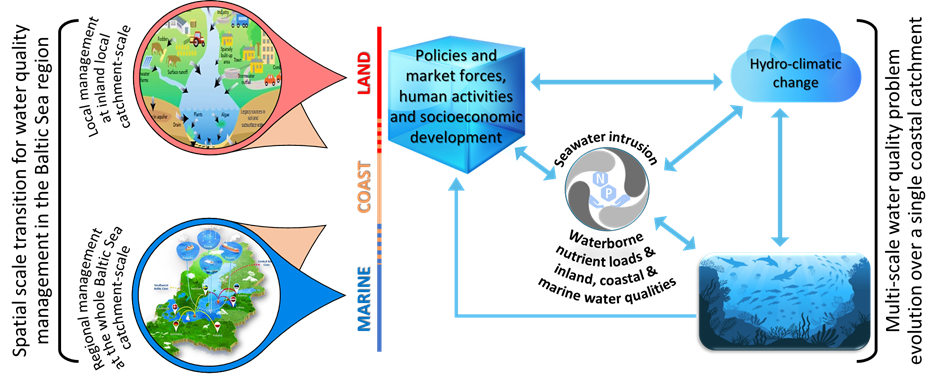Complex interactions and feedback structures in the MAL3 land-sea system are modelled in a system dynamics framework with great potential for business and policy analysis in this region. Recent assessments on coastal water quality conditions and its possible improvements has highlighted that cross-sectoral management and mitigation measures at local (corresponding catchment) scale can improve inland and only local coastal water quality in MAL3. To improve coastal water quality in the whole Baltic Sea region, such measures have to be extended across the regional scale and applied in all contributing catchments to the Baltic Sea, since coastal water quality depends on inland water quality and nutrient management in each associated catchments, as well as on marine water quality in general due to the sea hydrodynamics and circulations. As such, land-sea synergies are required not only in the MAL3 coastal catchment but also across the whole Baltic Sea drainage basin to address regional coastal-marine water quality problems. Promoted synergies should include both the short and long-term measures temporally to manage the impacts of both current active nutrient inputs and historical nutrient legacy sources that are slowly but dominantly contributing to water quality problems in the MAL3 coastal region. These insights will be integrated to and reflected on the MAL3 business roadmaps and policy recommendations developed as part of WP3 in COASTAL.
Update on Norrström/Baltic - MAL3
Land-sea interactions in the MAL3 coastal region create various water-related problems from both quantity and quality perspectives. These problems are affected by inland, coastal and sea-based human activities (i.e. sectoral interactions) and spatial and temporal scale transitions in the MAL3 and the whole Baltic Sea regions, and further exacerbated due to hydro-climatic changes.

